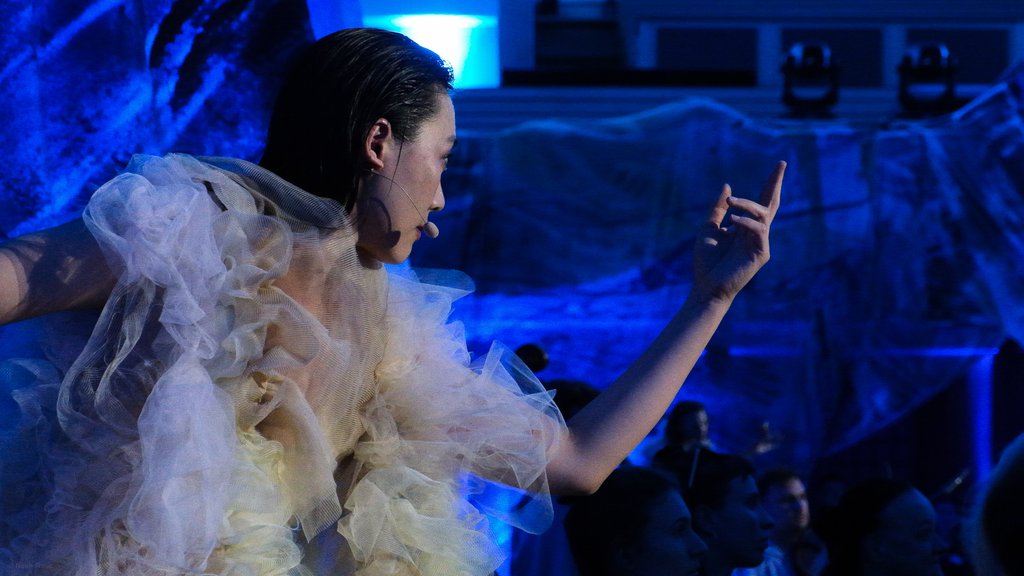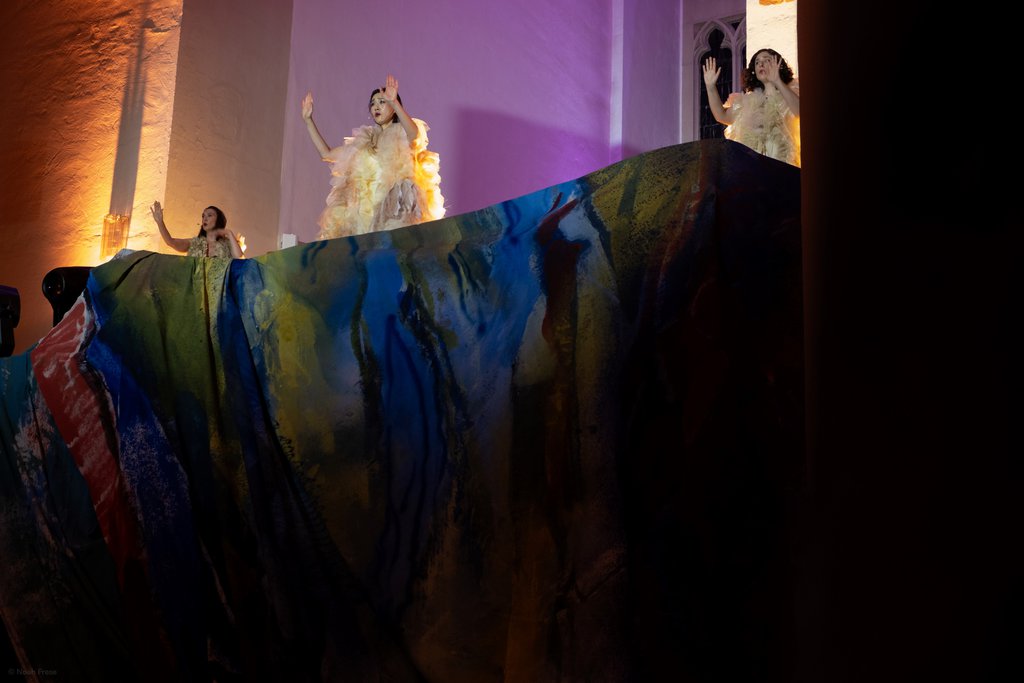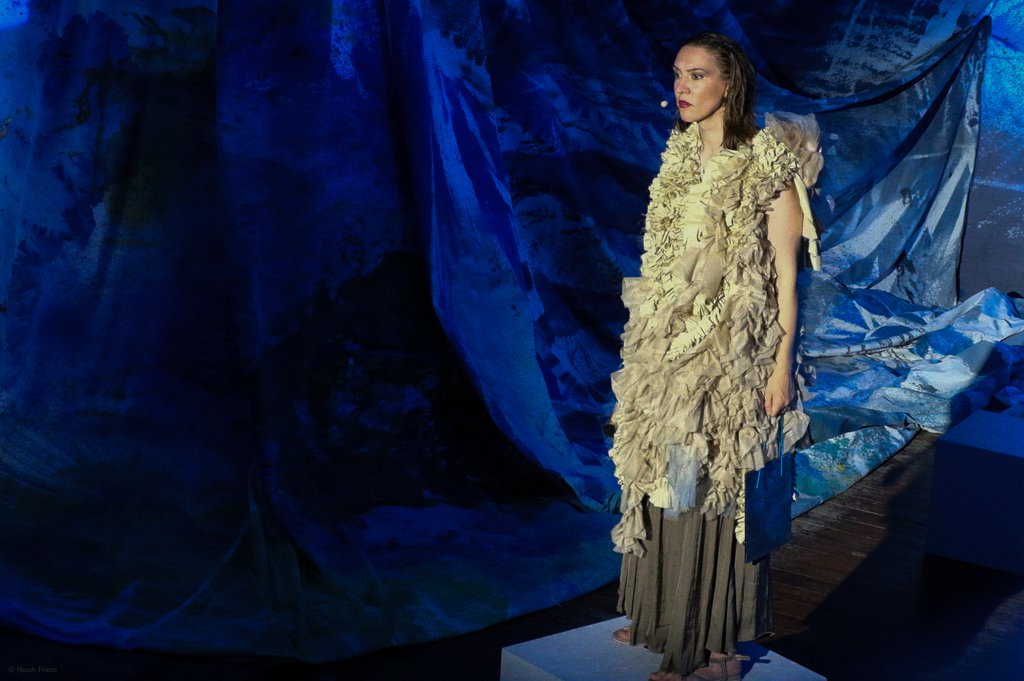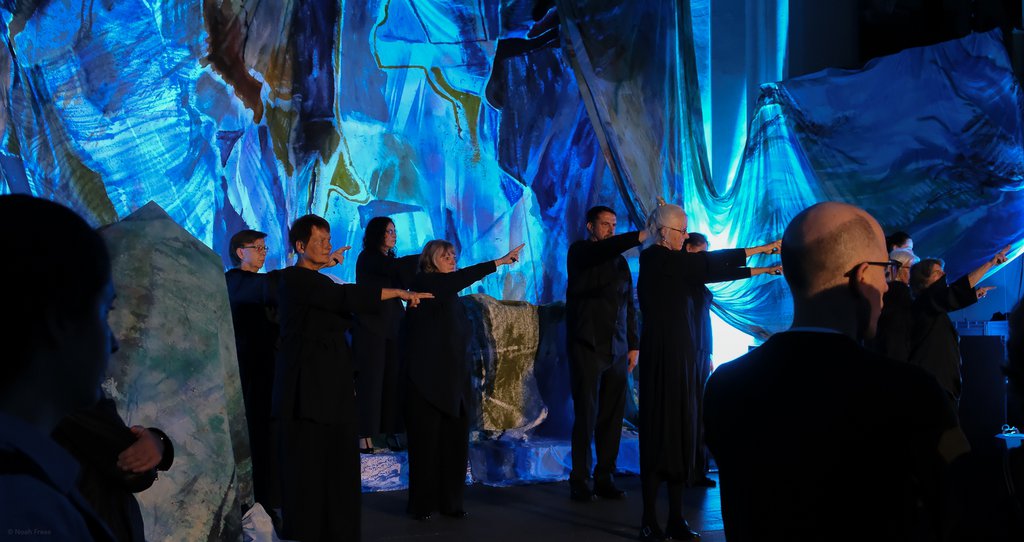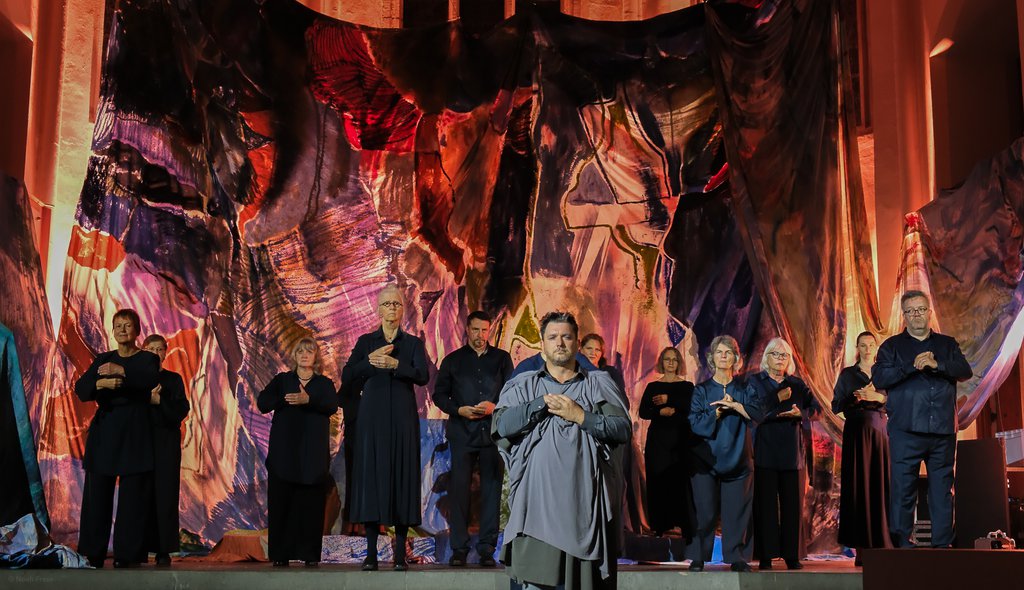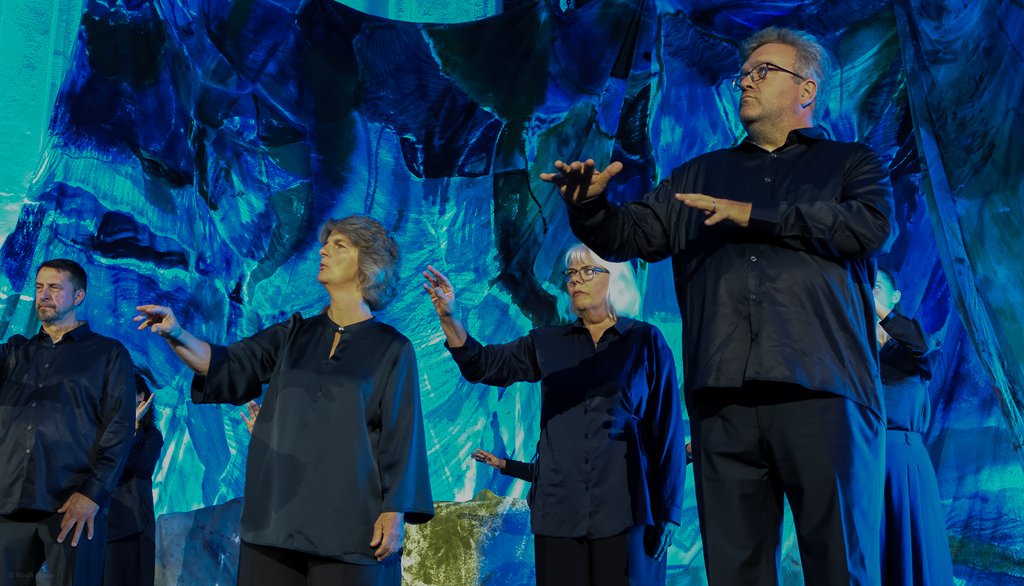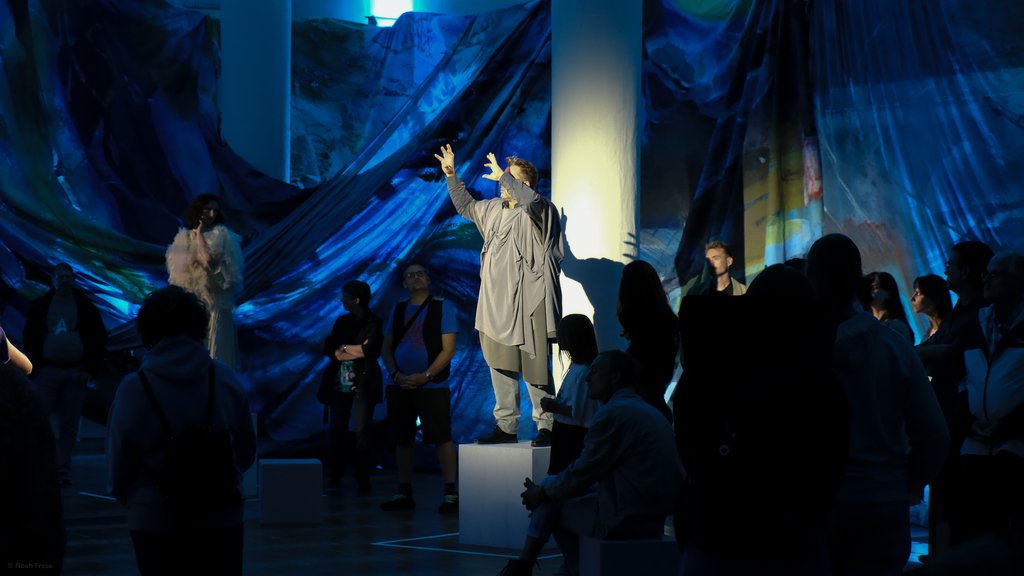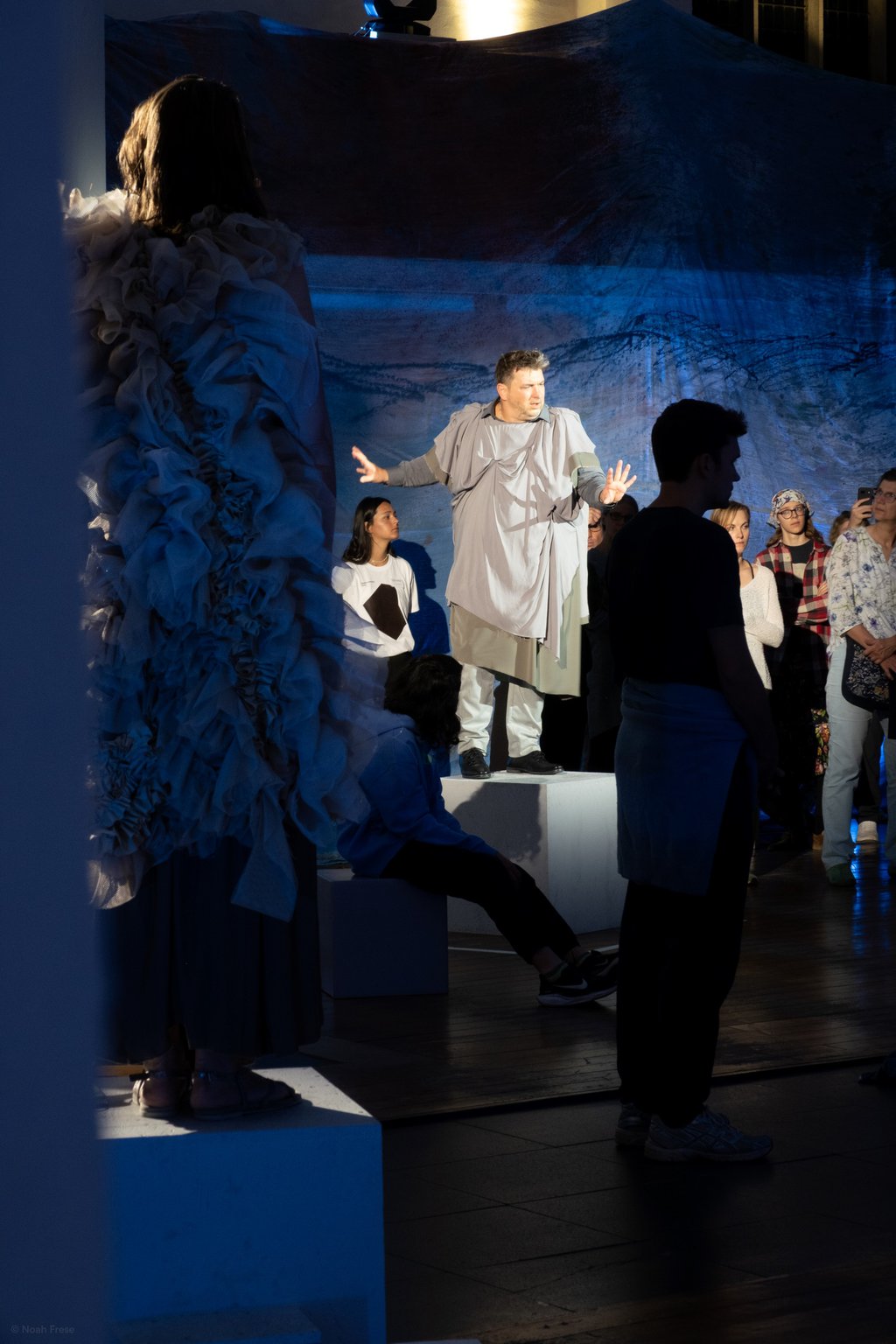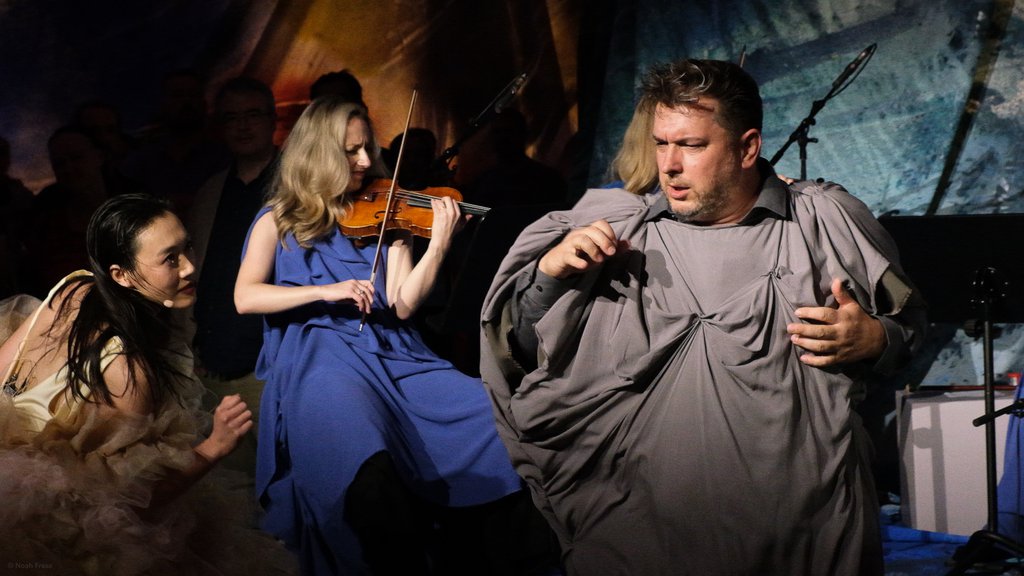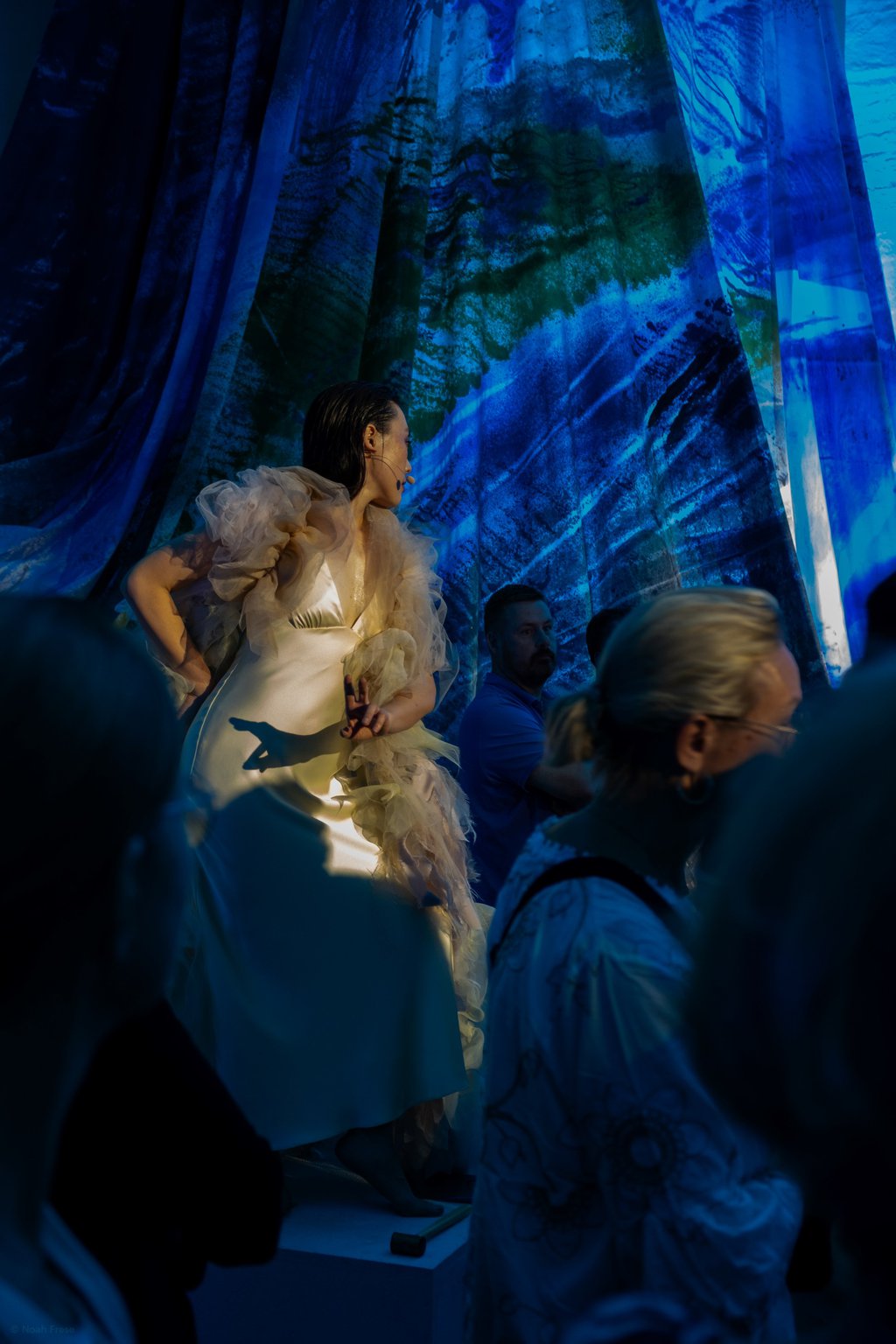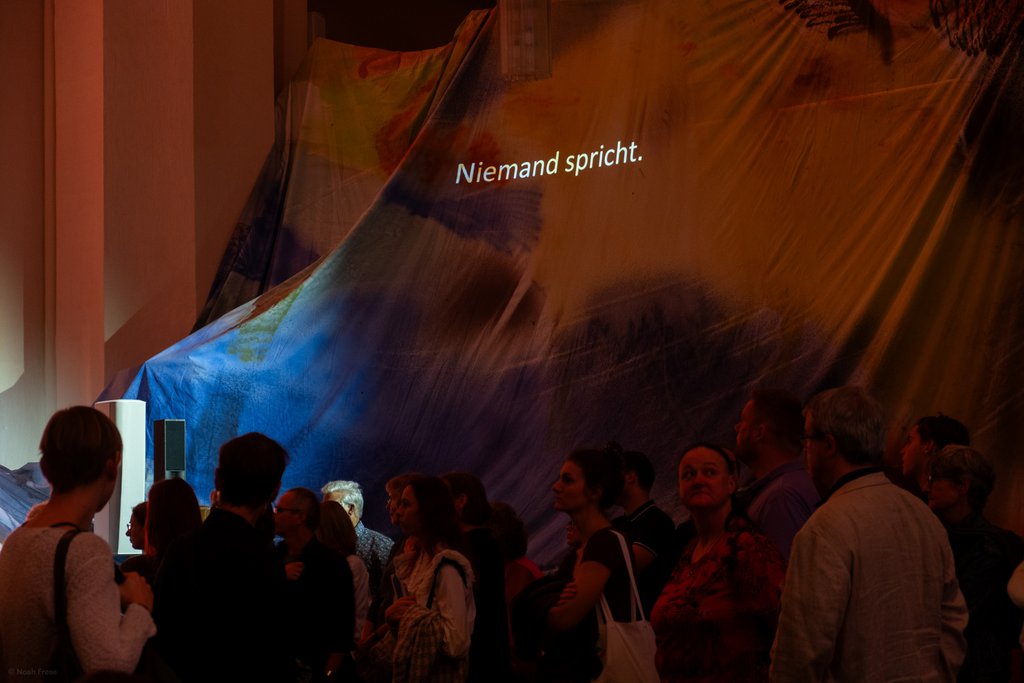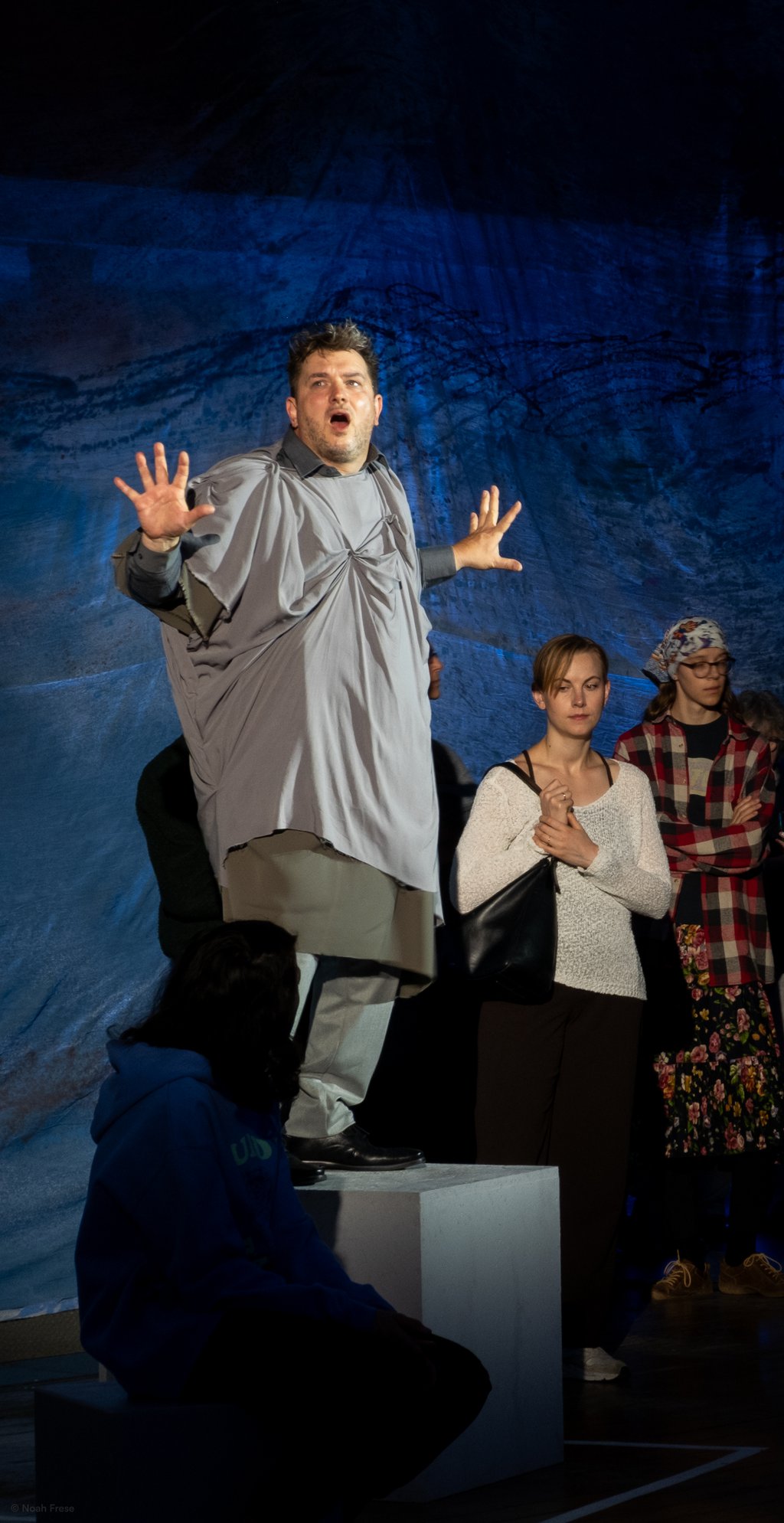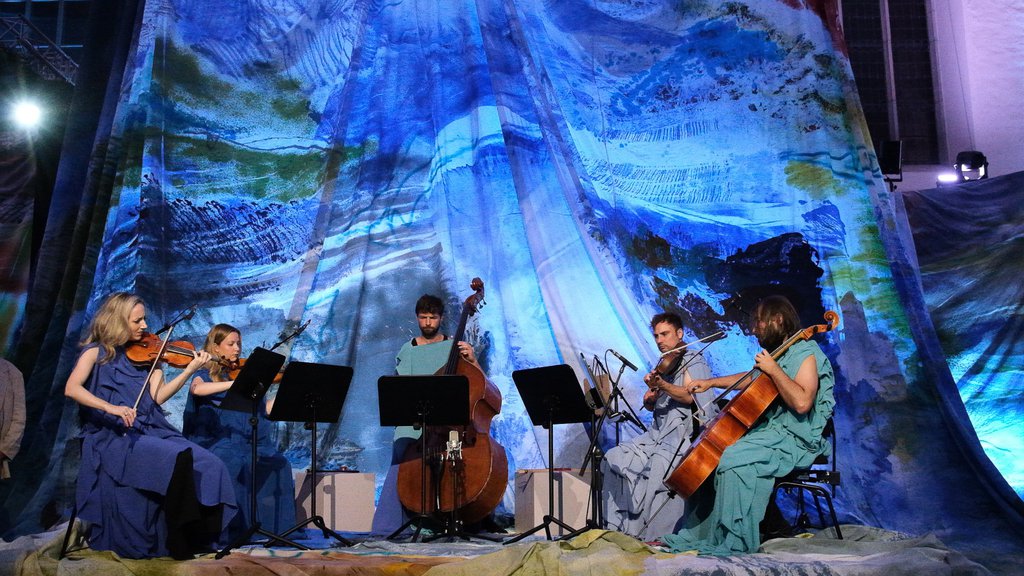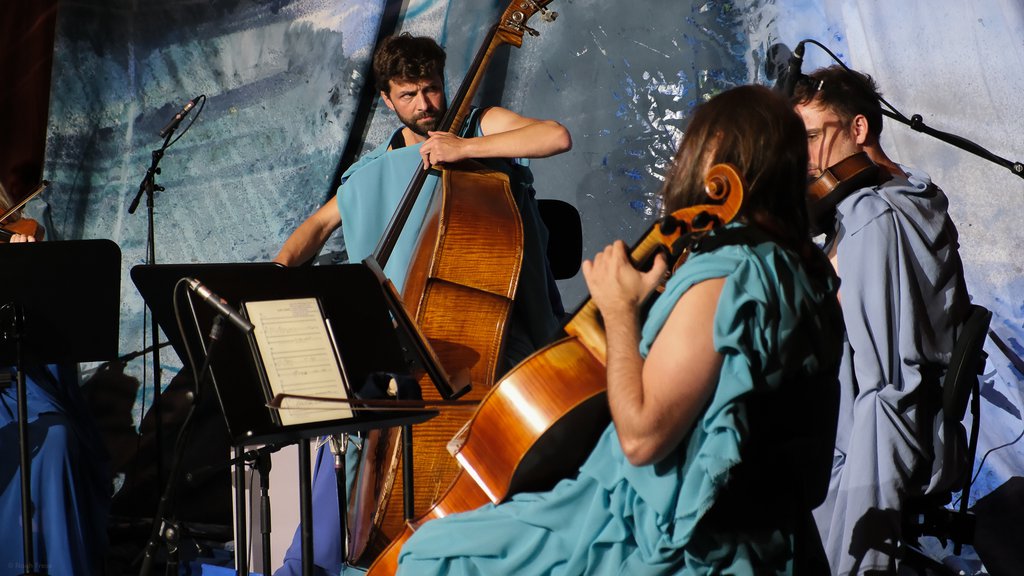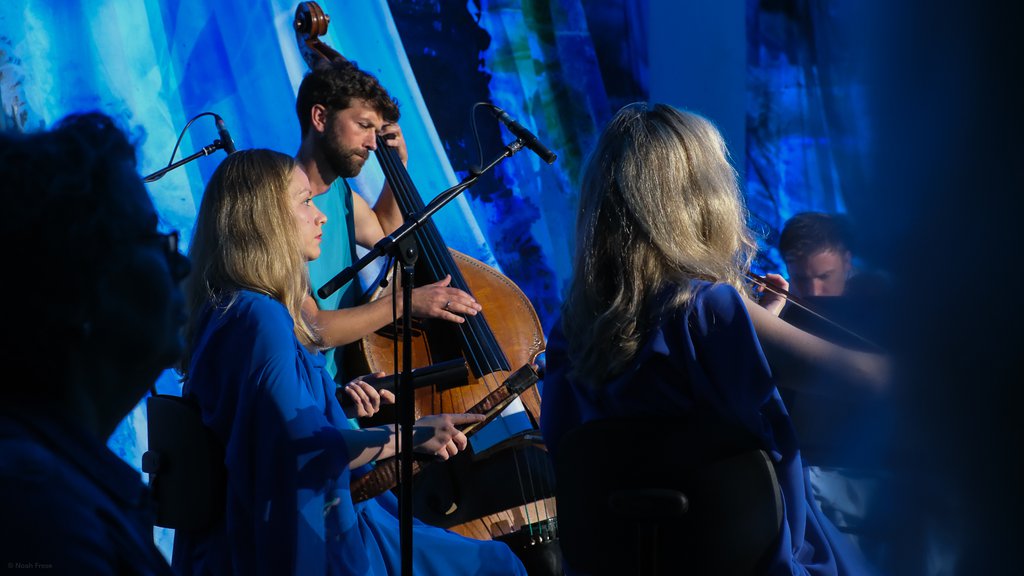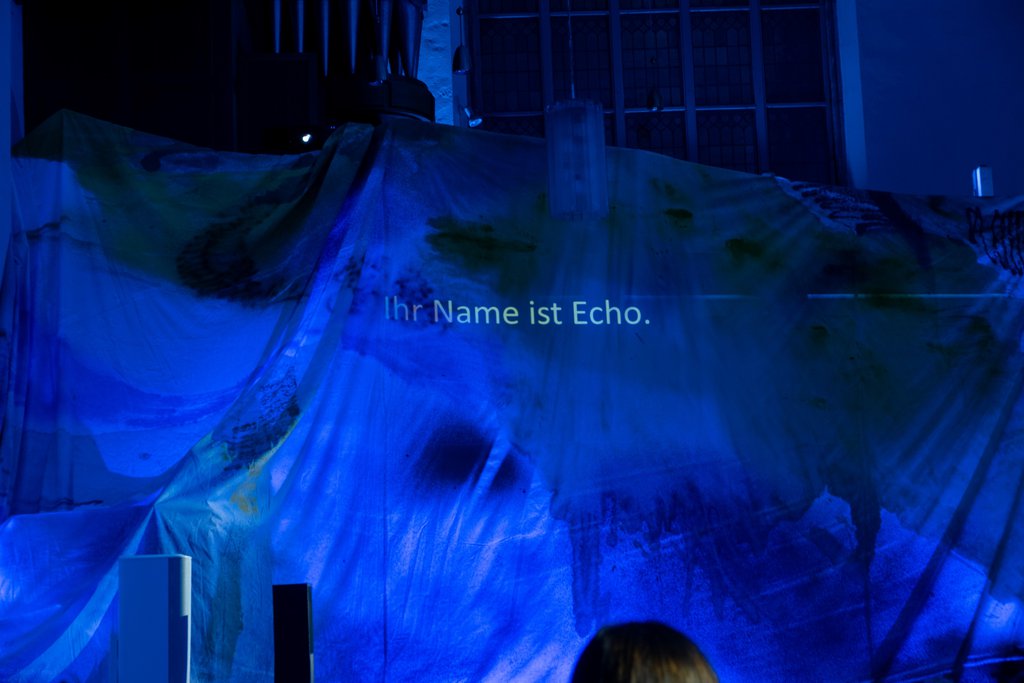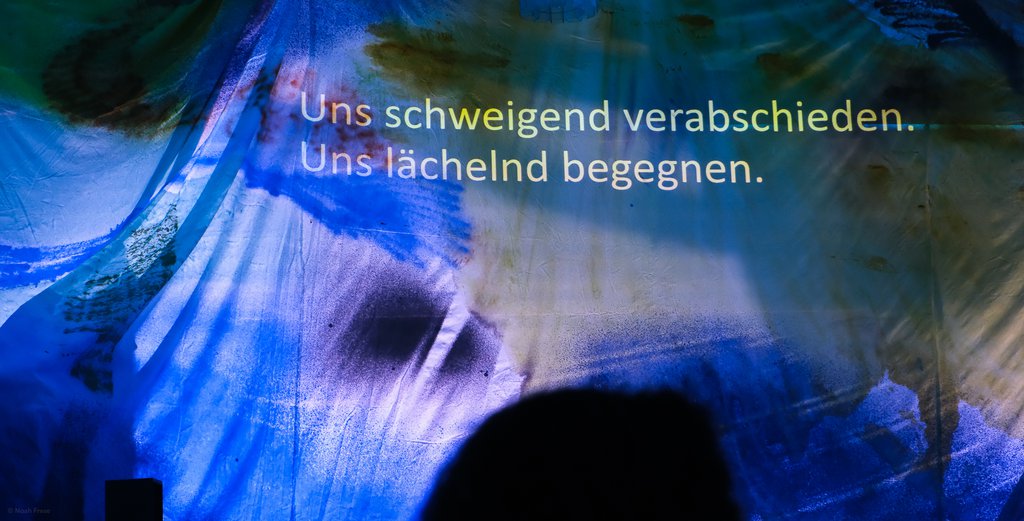With sign language, opulent stage design, projected text, pantomime and music after Pink Floyd, Hannah Baumann’s musical theatre production »Echoes in Limbo« placed the audience right in the middle of the action. This fellowship project was one of the most spectacular experiences of the 2025 festival. In this interview, she discusses echoes in the world and her stage concept, which combines a concert, theatre and audience interaction.
Fellow 2025 Hannah Baumann
The world of the petrified nymph
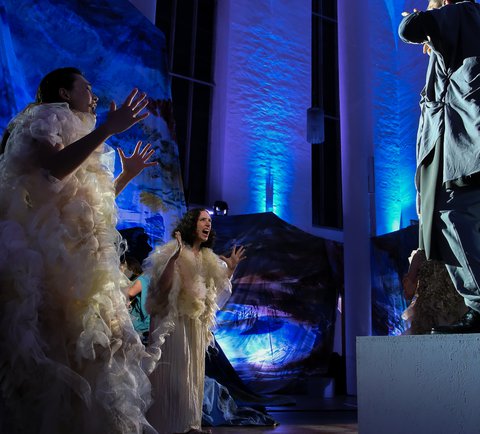
1. Warum Echo?
Why did you choose the myth of Echo for this project?
Hannah Baumann: Ovid’s Metamorphoses have been with me for a long time, especially the story of the nymph Echo. It offers so many points of reference: Echo can be seen as a musical and natural phenomenon, for example. However, I am particularly interested in its relation to world or social events, and its role as a psychological phenomenon. Echo falls in love with the beautiful Narcissus, who is the personification of narcissism. Since she cannot speak for herself, he rejects her, causing the nymph to ultimately wither away and become petrified. The echoist personality type, derived from the myth, is the counterpart to the narcissist. This imbalance between the two figures seems omnipresent in a world dominated by despots; narcissists tend to be loud and demanding. This theme is therefore also fundamental to my stage work: who has the opportunity to express their own voice and mind, and in what context? And what stage do echoists get? Do they become visible and audible?
2. Walk-in musical theatre
You describe the evening as a »walk-in musical theatre«. Why not just call it a concert or a theatre production? How does sign language poetry fit in?
In my work, I always seek an aesthetic experience in which the narrative is reflected through all the chosen media. I often find myself missing concrete narrative content at concerts, and I often feel a sharp break between language and music in spoken theatre, especially between the intellectual and emotional levels. I am looking for contemporary musical theatre in which narrative, text, and music intertwine.
When I first encountered sign language and sign poetry, I discovered an incredibly poetic form of expression, where language becomes visual imagery through physical expression — a rare sight on stage.
I also had a strong desire to incorporate this form of expression into my work, considering who I share the stage with, who I collaborate with, and who I learn from.
3. Spatial concept
From the outset, was it clear to you that the stage should span the entire room and that the audience should be able to move around it freely?
This became clear quite quickly. This may be because Söntke Campen is a painter, not a traditional stage designer. Visually, we wanted to incorporate a landscape into the space that would not be immediately apparent.
»Strangers passing in the street,
by chance two separate glances meet.
I am you, and what I see is me.«
This excerpt from Pink Floyd’s song »Echoes« is a guiding principle for the project. How do people, most of whom are strangers gathered together in one room for a short time, encounter each other? How do the audience encounter each other, and how do they encounter the musicians and performers? And who directs the action?
I like to embrace a certain unpredictability and the element of the unknown in live experiences. Open stages are always a social experiment in audience behaviour. My job is to prepare this space carefully from as many angles as possible. In the case of »Echoes in Limbo«, our aim is to facilitate interaction between a hearing audience and a deaf audience.
4. Collage & encounter
So, it’s about interpersonal encounters. How do you intend to achieve that?
One important keyword is »collage«. We combine opulent stage and costume design with the symmetrical, clear architecture of a church interior, eschewing the traditional central stage. The texts are not narrated in a linear way; they are pictorial and associative, partly because German Sign Language (DGS) had a significant influence on their design. We also collage the music: a string quintet based on Radiohead and Pink Floyd meets improvisation and soundscapes. With deaf poet Jan Sell, we also translate sound into sign language poetry and vice versa. We work with these different means to create situations rather than linear narratives.
5. Putting up with sharing the space
This is an experimental music theatre space with no chairs or fixed seating. Could the audience’s movement around the room be disruptive?
I think it works, even if it can be somewhat distracting at times. But our diversity means we have to put up with each other because we share this space. I like it when the audience becomes part of the action rather than remaining an anonymous mass. When people become aware of how their mere presence helps shape what is happening, something powerful can emerge in terms of mindfulness and attentiveness towards others. Above all, concerts, musical theatre and performances should be spaces for encounter. These only arise in the moment with others.
6. Music selection
How did you select the music, and how does it align with the concept or myth?
I have known the composer, Ian Anderson of the string quintet Wooden Elephant, for quite some time. He was commissioned to arrange Pink Floyd’s »Echoes« for string quintet for this production, and then adapted it to fit my dramaturgical ideas. Radiohead’s »In Limbo« was then added, which Ian had previously arranged for an album by the quintet. The music selection fits the theme of our play. Additionally, the sound language makes concrete states of mind tangible.
7. »Echoes in Limbo«
How would you describe the thematic relationship between the pieces »Echoes« and »In Limbo«?
The music is accompanied by text projections that provide an overarching narrative to the mythology. Rather than retelling Echo’s story, we invite the audience into her landscape after she has been turned to stone. These are pre- and post-narratives of her existence as an echo in the world.
For me, limbo is a transitional state, a place of being in between. The mystical stage space in which the audience finds itself is intended to represent Echo’s limbo. Within this space, we explore emotional transitions: moving from anger to grief, joy to despair, powerlessness to euphoria, and stagnation to movement.
I believe that art often exists in the intangible and mystical. It is an interplay of different sensory impressions. Perhaps, then, I am trying to create a kind of artistic limbo.
The premiere at the festival
- , Kreuzkirche
Hannah Baumann: Echoes
Dance, Performance & Music TheatreWooden Elephant, Signing choir Klingende Hände, Jan Sell
